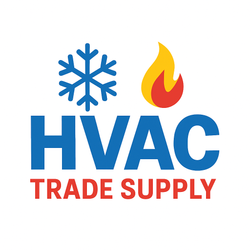0412 333 115
0412 333 115
Eliminate hoses and minimize the chance of leaks when performing an evacuation! Looking for a better way to connect your vacuum gauge or vacuum ...
View full detailsThis collection brings together reliable micron gauges designed for Australian conditions. Whether you’re a tradie tuning a split-system in Darwin or a contractor commissioning multi-splits in Melbourne, these gauges help you pull a proper vacuum, confirm dryness, and protect compressors for the long haul.
What’s a micron? A micron is one micrometre—one millionth of a metre (1 μm). In HVAC we use “microns” to measure absolute pressure during evacuation. Hitting a target like 500 microns (and proving it holds) means moisture and air are out, oil lasts longer, and systems run quieter and more efficient. Too easy.
However you search—micron gauge, digital vacuum gauge, vacuum gauge for vacuum pump, vacuum pump and gauges, or vacuum gauge HVAC—this range has you covered. Pull down deep, verify with confidence, and sign off with pride.
Picture a humid arvo in Brisbane: you’ve evacuated to 600–700 microns and it stalls. With the gauge mounted at the service port and cores removed, the decay shows a slow rise—moisture flashing off, not a leak. A gentle warm-up, fresh oil, a re-pull—and now you’re sub-500 and stable. No callback, no drama—fair dinkum.
If you’re building out your evacuation setup, match your gauge with a high-flow pump and hoses for faster pull-downs. Start with our Vacuum Pumps and pair with Vacuum Hoses.
Use short, large-bore hoses with Schrader cores removed. Isolate the pump and watch the decay: a fast rise = leak; a slow rise = moisture. You’ll be packed up and off to the next job quicker than you can say “ripper”.
Local note: Coastal NSW salt-air and Darwin humidity mean moisture and corrosion are real—prove a dry system with a proper decay test and you’ll avoid those pesky callbacks.
For a bulletproof setup, consider:
This is a collection. Each product page lists its own inclusions (gauge body, couplers, batteries, manuals, etc.).
| Measurement Range | ~50 to 25,000 microns (model-dependent) |
|---|---|
| Units | Microns, mTorr, Torr, mbar, Pa, mmHg (varies by model) |
| Display | Backlit LCD; some models feature wireless app viewing |
| Ingress Rating | Up to IP54 (model-dependent) |
| Mounting | Direct to service port; reversible/angled couplers on select models |
| Use Cases | Evacuation verification, decay testing, documentation |
Backed by Australian consumer guarantees. Manufacturer warranties apply per item. Change-of-mind returns within 30 days in original condition. See site-wide Warranty & Returns at checkout.
Most OEMs and trade best practice aim for ≤500 microns with a stable hold (decay test). For high humidity days or larger line sets, going sub-300 can help. Learn more in our guide: Understanding Micron Readings.
At the system port with cores removed for the most accurate reading. Keep hoses short and large-bore to minimise restrictions.
Isolate the pump and watch the decay: a fast rise points to a leak; a slow rise suggests moisture flashing off. Warm the components safely, refresh oil, and re-pull before charging.
Want practical tips, how-tos, and real-world checks? Visit the HVAC Trade Supply Blog for refreshers you can use on the next job.
For professional guidance and training resources, see AIRAH. Staying aligned with recognised best practice keeps installs tidy and reduces callbacks.
{"one"=>"Select 2 or 3 items to compare", "other"=>"{{ count }} of 3 items selected"}
